Does changing traffic light signage to a lady’s silhouette make it #MumbaiForEveryone?
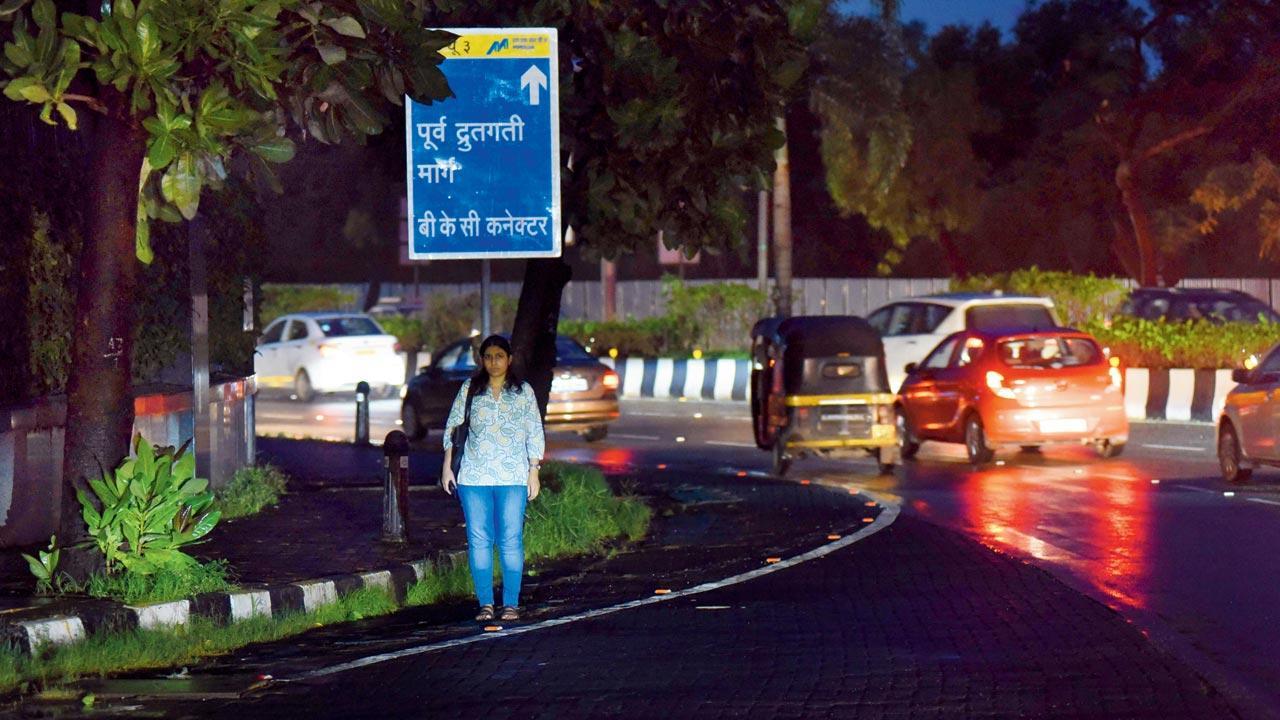
This writer spent more than an hour in BKC at 7.30 pm on a weekday, walking through all the bylanes and the main road. Most of these had no streetlights, and the footpaths were dimly-lit. Pic/Sameer Markande
The official Instagram handle of Tactical Urbanism Mumbai, which was started by Brihanmumbai Municipal Corporation (BMC), posted about changing the traffic light signage to a woman instead of the usual man a week ago. “Inclusive signage plays an important role in making public spaces feel like they belong to people of all genders, ages, and abilities,” the post said, tagging it #MumbaiForEveryone. This move was applauded but many were not convinced that it is enough to make a city inclusive for all kinds of people, gender included.
ADVERTISEMENT
“Signages are surely one way to make city spaces gender-inclusive,” says Hitesh Vaidya, Director of National Institute of Urban Affairs (NIUA). “[However,] there is a need to bring about a change in the elements, design, and planning of our built environments, and ultimately across the entire practice of urbanisation.” Other experts agree that this first step should not be the only step.
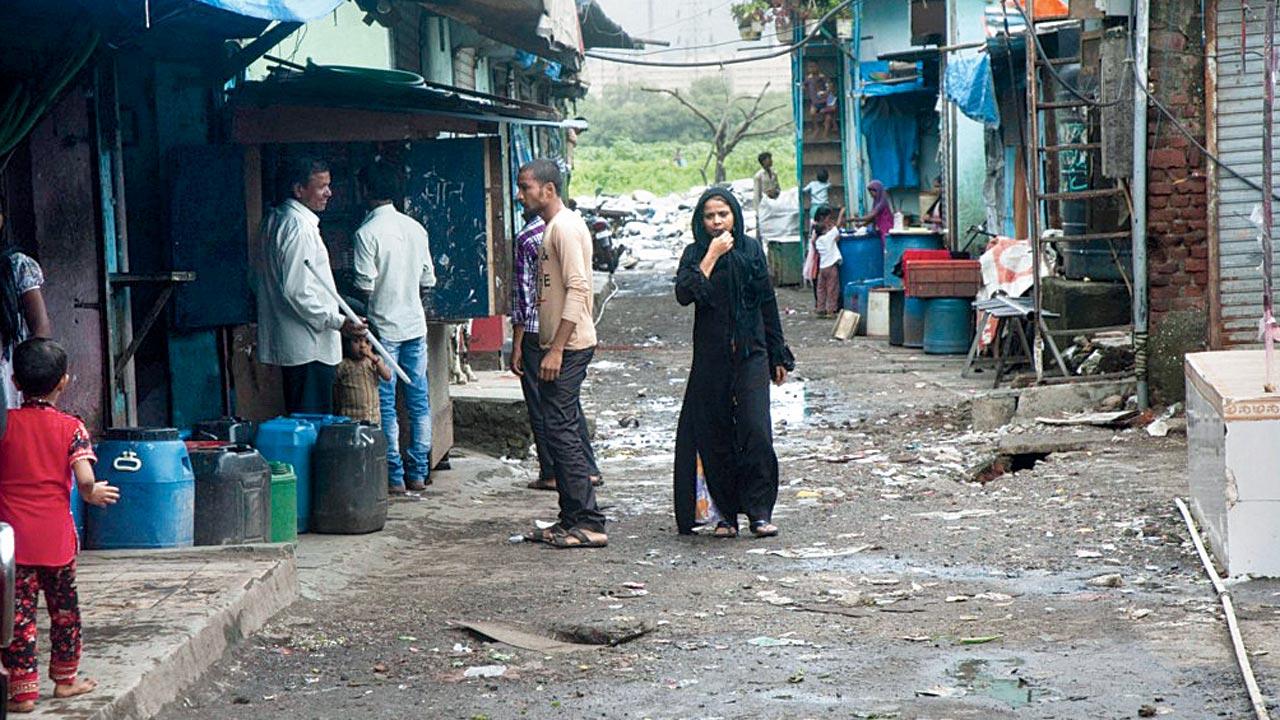 Proposed plans by IMK Architect to make a city more inclusive by transforming public spaces, especially slum areas
Proposed plans by IMK Architect to make a city more inclusive by transforming public spaces, especially slum areas
“Getting signage to conform to the gender-inclusive concept is a superficial approach,” says Marine drive-based Anuprita Dixit, the Design Director at IMK Architect. “It may help in indicating the idea graphically, but if the space is not planned appropriately, then it fails to serve the purpose.” “Not only is this the easiest thing to do, it could also be a campaign gimmick,” thinks ElsaMarie D’silva, founder of Red Dot Foundation (Safecity). The platform aims to make cities safer by encouraging equal access to public spaces for everyone, especially to women. While D’silva believes that changing the signage can go a long way in addressing the unconscious bias that only men inhabit the city, she doesn’t think it can make the city gender-inclusive.
“A city designed to make women, children, vulnerable communities or elderly safe is a great city for all,” says a 2018 report by Red Dot Foundation (Safecity) and Urban Vision (a think-do-tank on livable cities), titled “Reimaging a city from a woman’s perspective”.

One also needs to take into consideration people with disabilities, those in wheelchairs, pregnant women, and mothers; as well as those from marginalised communities. Can they walk on the streets or the footpaths safely? How do they feel in a public garden? Are they on guard in public transport?
“There are no walkable footpaths,” points out D’silva, “They are mostly occupied by hawkers. Or they are one foot high with no proper gradient. The paving blocks are in a mess. There are trees in the middle of a footpath; you can’t manoeuver wheelchairs or prams around them.” An inclusive city, according to her, should be one you can walk or cycle around safely in.
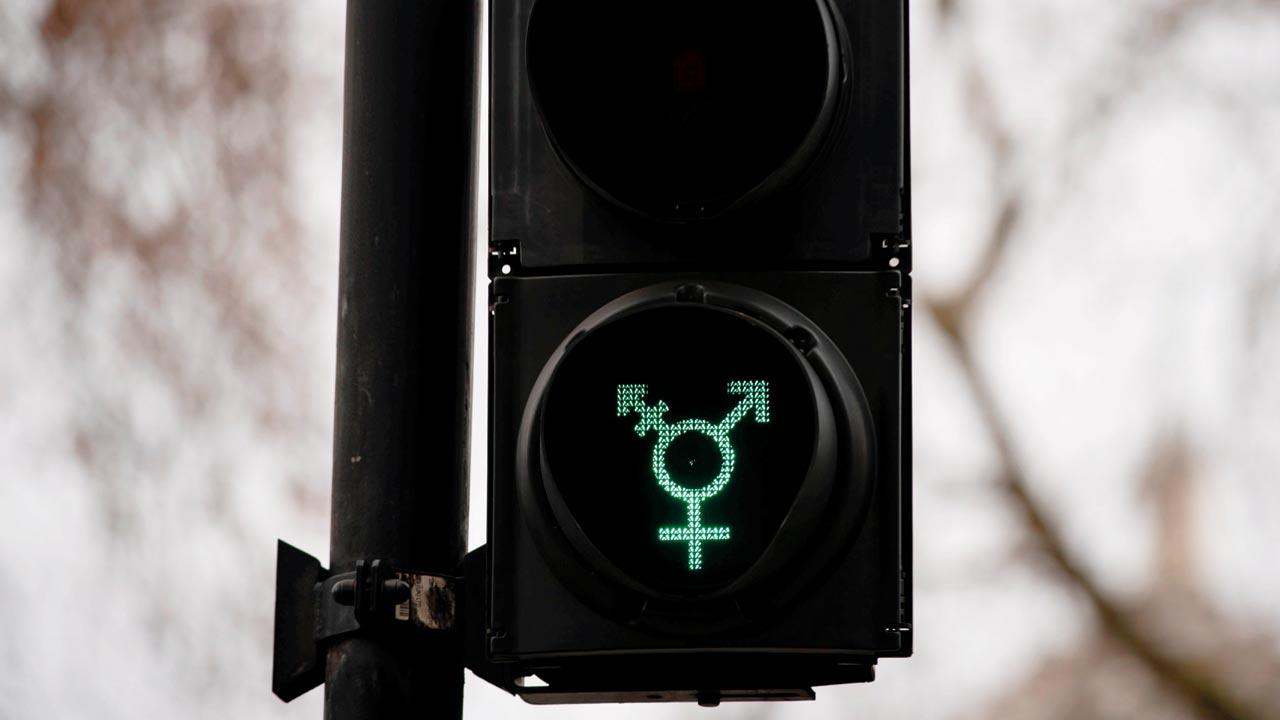 A gender inclusive sign in Trafalgar Square, London
A gender inclusive sign in Trafalgar Square, London
Parthima Manohar, co-founder of Urban Vision, who worked with D’silva on the city primer, talks about the concept of ‘eyes on the street’. The term was coined by renowned urbanist Jane Jacobs. In her words: “There must be eyes on the streets, eyes belonging to those we might call the natural proprietors of the street. The buildings on the street must be equipped to handle strangers and to ensure their safety, as well as that of the residents. They cannot turn their backs and ignore the street.” This concept can be achieved with human scale architecture.
Also Read: Shave like your grandpa
Another suggestion by Manohar is having a diversity of urban activities on the street to make it safer for women. A mixed-use planning—a mix of residential, commercial, social and open spaces—can create a “24/7” urban environment. According to the report, neighbourhoods with 100 per cent commercial use make it user-friendly only in the day. A mixed-use planning would have 24-hour human surveillance. “You would not walk at Mumbai Port Trust or Bandra-Kurla Complex (BKC) at 11 pm,” cites Manohar as an example. “But you would feel perfectly comfortable and safe walking at Carter Road because it is full of activities and attracts a diversity of people.”
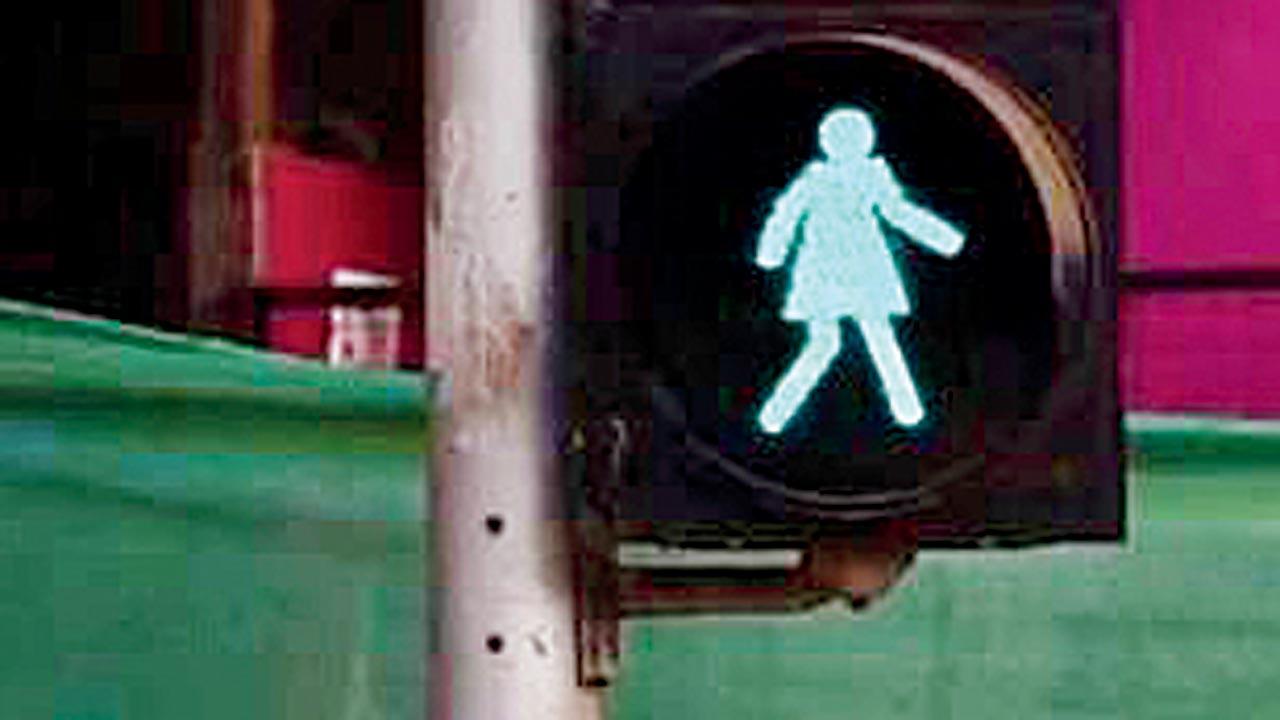 A photo in the post by Tactical Urbanism Mumbai showing a woman’s silhouette on the traffic light
A photo in the post by Tactical Urbanism Mumbai showing a woman’s silhouette on the traffic light
To test this concept, this writer spent more than an hour in BKC at 7.30 pm on a weekday, walking through all the bylanes and the main road. Most of these had no streetlights; the only light was that of the passing cars. The footpath adjoining the main road was the same—dark with a few auto rickshaws parked by the curb. Only a few bylanes were well-lit or had walkable footpaths accessible by wheelchairs and prams. These were present near restaurants and some private office buildings. The many vacant plots add to the desolate stretches.
In some countries, public places such as parks are touchstones for accessibility and inclusivity. A 2016 study by the United Cities and Local Governments (UCLG) found that girls aged between 10 and 12 used parks less in Vienna. The city council then focused on gender-sensitive solutions such as turning football cages into volleyball and badminton courts—activities that accommodate all genders.
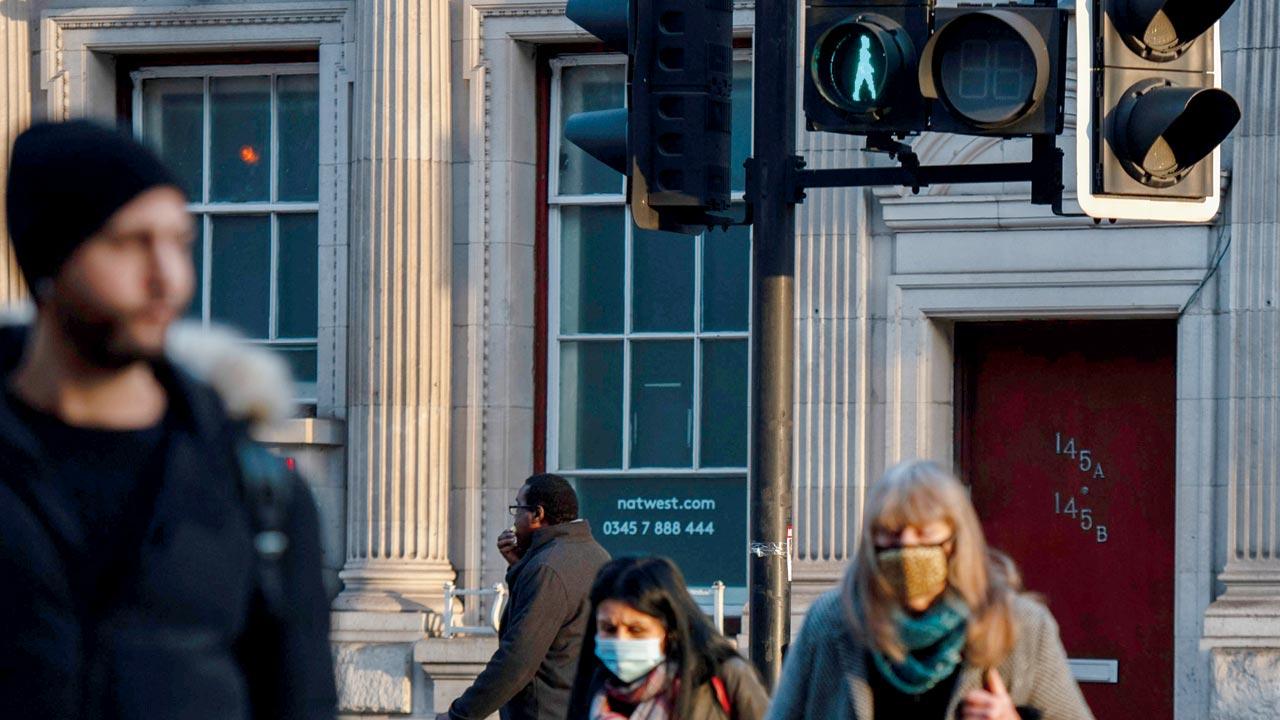 A green crossing light is changed into the outline of a woman on Clapham High Street. Pics/Getty Images
A green crossing light is changed into the outline of a woman on Clapham High Street. Pics/Getty Images
A manual for gender mainstreaming in urban planning and development published by Urban Development of Vienna states the city developed several methods to assess and evaluate public space with regard to its qualities for different target groups. “With its footways, streets, and squares, public space creates the preconditions for the proper use of urban quarters. Improving the [small scale] mobility of pedestrians is essential for enhancing equality of opportunities in such quarters,” the manual stated. “[An inclusive city] needs both, physical space and symbols,” says Eva Kail, “to create an inviting and encouraging street space. Symbols such as traffic lights and female street names create an inviting atmosphere. But of course, if the organisation of the traffic and shape of public space is hostile to pedestrians, it does not help much.” Kail is an urban planner and gender planning expert in the City of Vienna, Austria.
D’silva points out a problem peculiar to Mumbai. “Most parks are closed in the afternoon, which is when most homemakers are free.” She urges that garden care-takers should be sensitised to have a more inclusive approach. She also makes a case for signs informing people of their rights and also reminders of punishment involved for crimes committed in that space. Other recreational needs such as reading, playing board games, having tea-parties should also be taken into account and parks should have facilities for them.
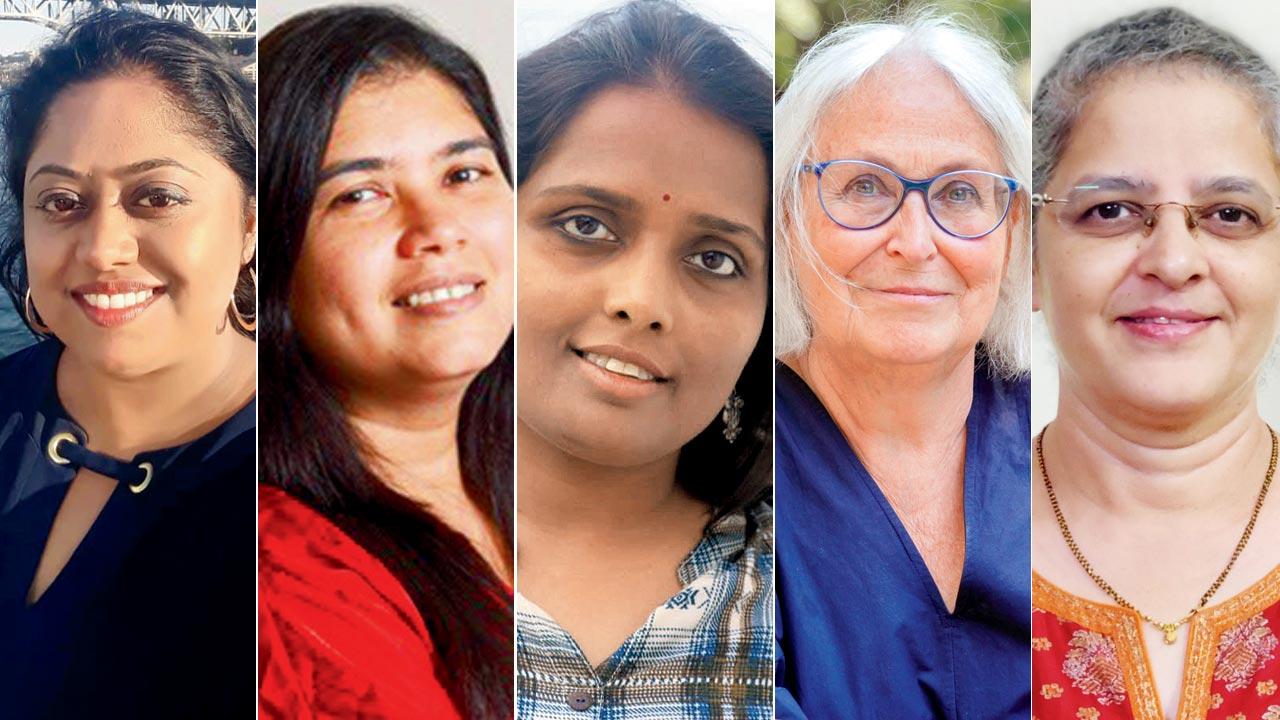 Prathima Manohar, ElsaMarie D’silva, Deepa Pawar, Eva Kail. Pic/Jana Madzigon; Anuprita Dixit
Prathima Manohar, ElsaMarie D’silva, Deepa Pawar, Eva Kail. Pic/Jana Madzigon; Anuprita Dixit
“Most administrative work is viewed through the eyes of a man,” says Deepa Pawar, founder and director of Anubhuti Trust. “If it were from the point of view of a woman, we would see more facilities for day cares. We don’t even think and consider that girls could play in playgrounds. If we did, there would be separate toilets.” Anubhuti Trust is a women-led NGO that deals with caste, class, gender, language, and ethnicity-based discriminations.
Pawar emphasises that free, safe, and hygienic toilets should be present at all public as well as private places. “Painting a train pink or changing the traffic light signage is just a token measure,” she states. “For a woman in a wheelchair, the spatial requirement is not limited to providing a separate toilet. It must also take into consideration mobility requirements such as the door width for the wheelchair to pass through, support systems such as handrails in the disabled-friendly toilets and accessible heights of washbasin, health faucet, and toiletries. The same applies to children with disabilities, pregnant women and trans persons,” adds Vaidya.
The location and infrastructure of the toilet should also take safety into account—proper lighting, functioning doors and locks, intact windows, and supervision. “In a mall, which has free and hygienic toilets, any woman—be it one from a marginalised tribal community or an urban woman—should feel safe and comfortable. “Hygiene and gender-sensitivity must also be internalised in the design,” says Dixit. “The toilet cubicle should not be cramped, taking into account the fact that mothers need to assist their children, and nursing mothers.
“We have not begun to engage with this issue in real earnest,” says Dr Himanshu Burte, Associate Professor at Centre for Urban Science and Engineering at Indian Institute of Technology-Bombay (IITB). Burke also suggests acknowledging the diversity of people who actually use public spaces such as the streets and footpaths in different ways. While the BMC has initiated a few projects of transforming idle spaces—like those under flyovers—into recreational spaces, Burte does not think that’s enough. “Many of the redesigned under-flyover spaces are at relatively elite localities. They are not going to change the general reality of the city. But if a similar investment is possible across the city, then the benefit would be spread wider.”
“The biggest roadblock is in the minds of designers,” says D’silva. “Are they actually designing an inclusive city on the drawing board?” Planners and designers learn this but may not implement it in the real world. “They and their managers should go through gender-sensitivity programmes. They should have consultations with all sections of society. You are designing for a city inhabited by all sorts of people who live, work and play. Their needs should be taken into account.”
Back to the man on the signal, experts believe a stick figure or the representation can change from country to country, state to state. A sign used in Vienna for women could vary in India. “Though representation is difficult, it is not entirely impossible,” says Vaidya, “as evident from the universal accessibility signage. More than one symbol in a signage, depicting multiple users can solve the problem of apt representation.”
 Subscribe today by clicking the link and stay updated with the latest news!" Click here!
Subscribe today by clicking the link and stay updated with the latest news!" Click here!







